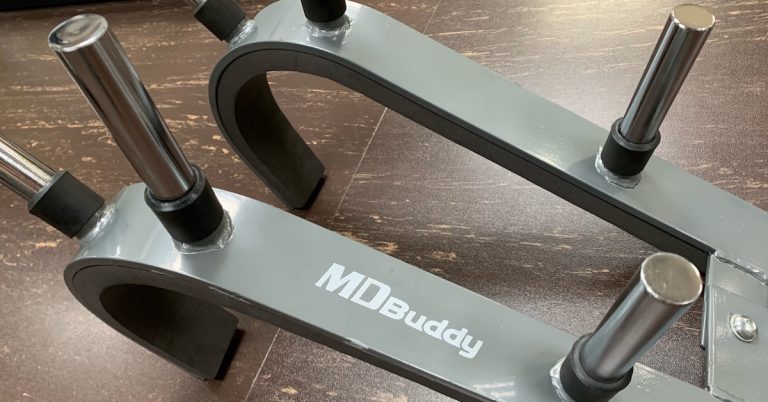Falls are the leading cause of death due to injury among the elderly (1). In fact, elderly patients are 3 times as likely to die following a ground-level fall compared to young adults (2). This is often due to weak bones. The misconception is that elders fall and then break their bones, but the sad reality is that their bones break first, and then they fall! That’s how fragile the average person becomes as they age.
Of course, we all know the importance of “use it or lose it,” but what’s disturbing is that people believe that they can use very little to prevent bone loss. That’s not true! Weightbearing exercise is important, but the load must be significant and it should be applied to the axial skeleton, not just the appendicular skeleton. In other words, the load should be supported by the spine, not just raised by the limbs.
So if you plan to use exercise to help you prevent bone loss, make sure you do the right thing. There’s a big difference between wrist curls and back squats. There’s also a big difference between raising two pink dumbbells and a heavy loaded barbell.
Iron Man vs. Pepper Potts
Gwyneth Paltrow is an Oscar-winning actress who I believe has done a wonderful job at promoting physical activity to the masses, but I’m not so sure that her personal fitness regimen is ideal for bone health.
A few years ago, Paltrow announced that she had osteopenia, a precursor to the brittle-bone disease osteoporosis (3). Paltrow is known to exercise regularly, as much as 6 times a week, but she believes that weight training is just for a muscle-toning purpose and that women shouldn’t lift weights more than 3 pounds (4). There are many factors that contribute to osteopenia, but it makes you wonder if Paltrow’s condition would’ve been different if she trained less frequently with higher loads?
If you’re interested in improving your bone density through exercise, here’s what the research says:
• Bone mass can be significantly increased by a strength regimen that uses high loads and low repetitions, but not by an endurance regimen that uses low loads and high repetitions (5).
• The magnitude required to produce an effective stimulus for bone remodeling appears to be a 1-10 repetition maximum load, or 85-100% of your one repetition maximum (6).
• Favour fast, explosive concentric (lifting) actions over slow concentric actions, and allow at least one day of rest between training sessions (7).
References
How often falls occur. (2012). http://www.learnnottofall.com/content/fall-facts/how-often.jsp
Cheng, J. (2010). For Elderly, Even Short Falls can be Deadly. University of Rochester Medical Center. https://www.urmc.rochester.edu/news/story/3020/for-elderly-even-short-falls-can-be-deadly.aspx
Fisher, L. (2010). Is Gwyneth Paltrow’s Diet to Blame for Bone Disease? http://abcnews.go.com/Entertainment/Wellness/gwyneth-paltrows-diet-blame-bone-disease/story?id=11034632
Gwyneth Paltrow Diet, Exercise Routine, Workout Tips. http://healthyceleb.com/gwyneth-paltrow-diet-exercise-routine-workout-tips/5757
Kerr D., Morton A., Dick I., Prince R. (1996). Exercise effects on bone mass in postmenopausal women are site-specific and load-dependent. J Bone Miner Res 11: 218-225.
Kraemer, W. J. (1994). General adaptations to resistance and endurance training programs. In T. Baechle (Eds.), Essentials of strength training and conditioning (pp. 135-136). Champaign: Human Kinetics.
Stengel, S. V., Kemmler W., Pintag R., Beeskow C., Weineck J., Lauber D., Kalender W. A., Engelke K. (2005). Power training is more effective than strength training for maintaining bone mineral density in postmenopausal women. J Appl Physiol 99: 181–188.

Why I Retired My Oura Ring: Navigating the Pitfalls of Orthosomnia and Wearable Tech
In the quest for optimal health, many of us turn to technology for insights, and the Oura Ring has been

Meet my New Fitness Buddy
The front squat is a fundamental exercise that everyone should incorporate into their routine, yet not everyone can execute it

Keeping Up with Current Research (December 2023)
Research is a valuable tool for health and fitness professionals, providing insights to stay ahead in the field. Here are
follow
Error: No feed with the ID 2 found.
Please go to the Instagram Feed settings page to create a feed.
